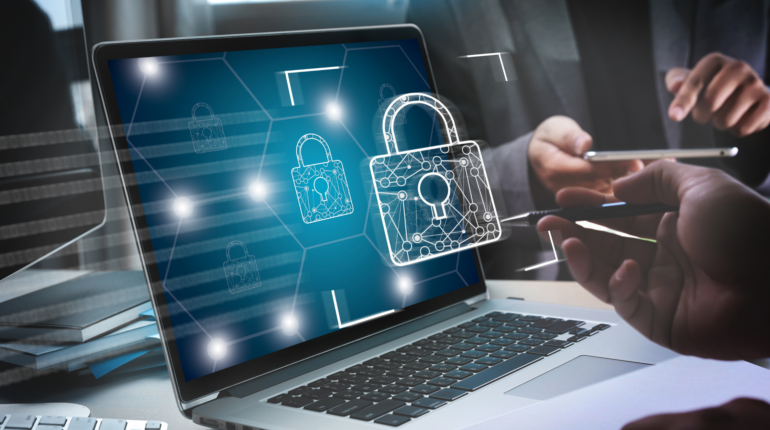
IT and Cyber Security: A Vital Combination
Among all sectors that rely on cybersecurity defense to keep bad actors at bay, healthcare is undoubtedly at the top of the list. A cyberattack that hampers a healthcare practice from accessing medical records or operating vital equipment can result in cancellation of treatments, suffering for patients, and, in severe cases, loss of life.
In a chaotic cybersecurity world where 90% of healthcare organizations have reported a breach in the past few years, IT has emerged as a formidable solution to fend off attackers. Short for information technology, IT is all about utilizing technology to operate more efficiently.
How are IT and Cybersecurity Connected?
In recent years, IT and cybersecurity have become inextricably intertwined. This is because of the increasing reliance on technology and digital systems to secure critical patient data, vital equipment, and health records from malicious actors.
Here are some key ways in which IT and cybersecurity are connected within the realm of healthcare:
- Protected Health Information (PHI) security: Healthcare organizations store and transmit vast amounts of sensitive patient data, known as PHI. IT systems and personnel are responsible for managing this data, while cybersecurity measures are implemented to safeguard it from unauthorized access, theft, or breaches.
- Medical device security: Many medical devices, such as imaging systems and infusion pumps, are now connected to networks for improved control and monitoring. These devices can be vulnerable to cyberattacks, potentially putting patient safety in jeopardy. IT professionals must liaise with cybersecurity experts to evaluate and mitigate risks and ensure secure device configurations.
- Electronic Health Records (EHRs): The adoption and management of electronic health records is heavily reliant on IT systems. EHRs store patient’s demographic, diagnosis, treatment, and disease progression data. IT experts must ensure the integrity and availability of EHRs through effective cybersecurity practices.
What Should You Look for in Management of IT?
Cybersecurity risks are not going away anytime soon, so streamlining your practice’s IT function is absolutely essential. Thankfully, you can outsource IT management to a third-party company to rid of yourself of the hassle and unnecessary costs of doing it in-house.
Here’s what to look for when outsourcing your IT management:
- Technical expertise: Effective IT management requires a proper understanding of IT systems and infrastructure. Look for a service provider with a robust technical background.
- Strategic planning: At its very core, IT management focuses on aligning IT goals with the overarching business goals and cybersecurity objectives. Settle for a service provider that is able to create IT strategy, set priorities, and allocate resources effectively.
- Change management: In the ever-evolving field of IT, changes happen in a heartbeat. Look for a service provider with professionals who are competent at managing and orchestrating change.
- Security and risk management: With the increasing importance of data security, IT management professionals ought to have a strong understanding of cybersecurity principles and best practices. Hire a service provider can seamlessly assess and minimize risks, implement current, well-thought-out security measures, and ensure compliance with relevant regulations.
Best Practices for IT and Cybersecurity
Implementing best practices for IT and cybersecurity isn’t just crucial for healthcare practices; it is a no-brainer. Doing so helps to keep sensitive patient information from the incessant clutches of hackers and ensures smooth operation of healthcare systems.
There are many best practices that can apply to the intersection between IT and cybersecurity. Here the pick of the bunch:
- Conduct frequent risk assessments to identify threats, vulnerabilities, and risks within the IT infrastructure. This helps in prioritizing security measures and allocating resources.
- Craft and enforce comprehensive security policies and procedures that address aspects such as incident response, data privacy, and acceptable use of technology. Regularly review and update these policies to ensure they adapt to evolving regulatory requirements and cyber threats.
- Implement strong encryption protocols to safeguard delicate patient data at rest and in transit. This includes encrypting data on laptops, mobile phones, servers, and during data transmission over networks.
- Employ strong authentication methods, such as multi-function authentication, to control access to sensitive data, applications, and systems.
IT and cybersecurity are very exhaustive topics, and a single blog may not do them justice. Fret not, though, because we have got you covered. If you would like more information or assistance on IT and security, contact us today at myeMED!
